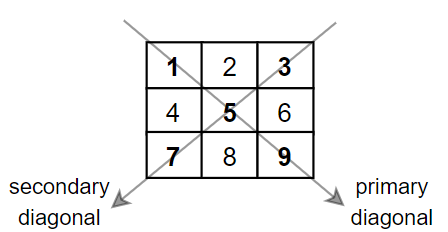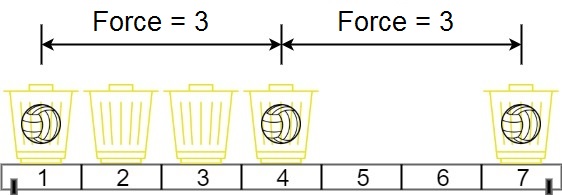Given a rows x cols matrix mat, where mat[i][j] is either 0 or 1, return the number of special positions in mat.
A position (i,j) is called special if mat[i][j] == 1 and all other elements in row i and column j are 0 (rows and columns are 0-indexed).
Example 1:
Input: mat = [[1,0,0], [0,0,1], [1,0,0]] Output: 1 Explanation: (1,2) is a special position because mat[1][2] == 1 and all other elements in row 1 and column 2 are 0.
Example 2:
Input: mat = [[1,0,0], [0,1,0], [0,0,1]] Output: 3 Explanation: (0,0), (1,1) and (2,2) are special positions.
Example 3:
Input: mat = [[0,0,0,1], [1,0,0,0], [0,1,1,0], [0,0,0,0]] Output: 2
Example 4:
Input: mat = [[0,0,0,0,0], [1,0,0,0,0], [0,1,0,0,0], [0,0,1,0,0], [0,0,0,1,1]] Output: 3
Constraints:
rows == mat.lengthcols == mat[i].length1 <= rows, cols <= 100mat[i][j]is0or1.
Solution: Sum for each row and column
Brute force:
Time complexity: O(R*C*(R+C))
Space complexity: O(1)
We can pre-compute the sums for each row and each column, ans = sum(mat[r][c] == 1 and rsum[r] == 1 and csum[c] == 1)
Time complexity: O(R*C)
Space complexity: O(R+C)
C++
|
1 2 3 4 5 6 7 8 9 10 11 12 13 14 15 16 17 18 19 |
class Solution { public: int numSpecial(vector<vector<int>>& mat) { const int rows = mat.size(); const int cols = mat[0].size(); vector<int> rs(rows); vector<int> cs(cols); for (int r = 0; r < rows; ++r) for (int c = 0; c < cols; ++c) { rs[r] += mat[r][c]; cs[c] += mat[r][c]; } int ans = 0; for (int r = 0; r < rows; ++r) for (int c = 0; c < cols; ++c) ans += mat[r][c] && rs[r] == 1 && cs[c] == 1; return ans; } }; |

